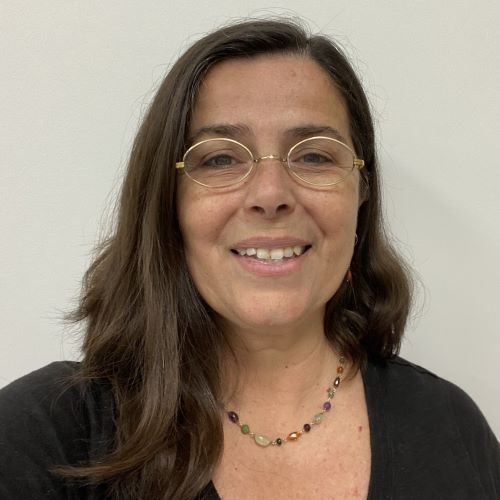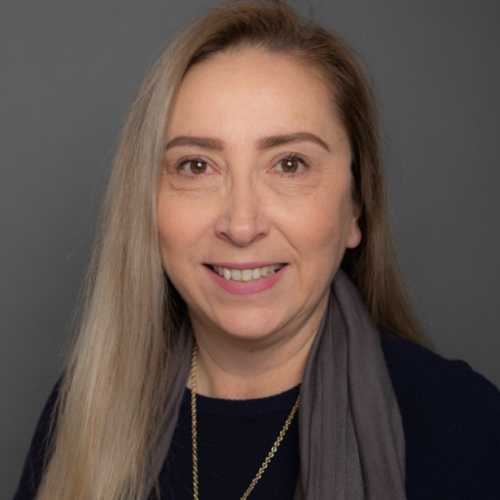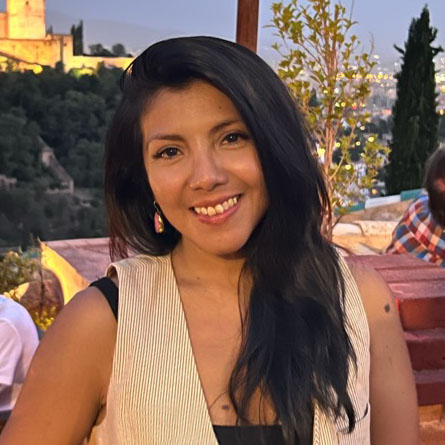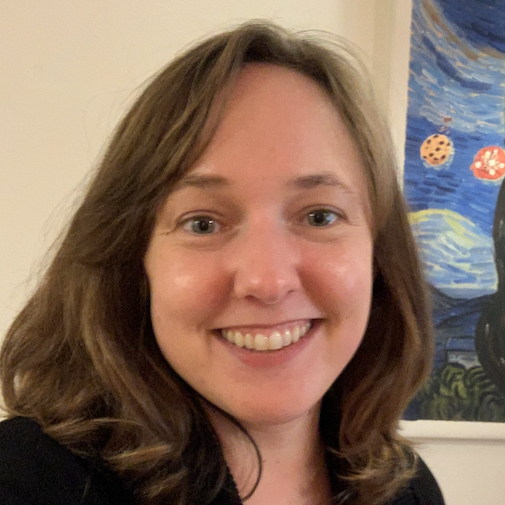THE World Language Teacher Summit FOR BACK-TO-SCHOOL 2.0 MASTERCLASS SESSIONS
The World Language Teacher Summit for Back-to-School 2.0 All-Access Pass gives you unlimited access to all 25 sessions so you can revisit them anytime you need to. Plus $1,264 in exclusive bonuses and your PD Certificate.
Click to Open/Close ▼
DAY 1 - KICKSTARTING THE SCHOOL YEAR

Your Roadmap to a Smoother School Year: The 5 Key Areas
by Jared Romey
In this presentation, Jared Romey introduces the Efficient Spanish Teacher Framework, a system designed to help language teachers reduce workload and stress, allowing them to leave work at school. Drawing from his extensive experience organizing the World Language Teacher Summit and collaborating with over 150 language educators, Jared outlines five core areas: classroom management, lesson planning, instructional time, grading, and assessments. By implementing these strategies, teachers can cut 5 to 20 hours from their workload each month, making their teaching experience smoother and more efficient. Though designed for Spanish teachers, these concepts apply to all world language educators.

Successful Starters for World Language Classes: Bell Ringers & Beyond
by Allison Wienhold
In this presentation, Allison Wienhold introduces engaging and consistent starters for world language classes in her educational session. She suggests different activities for each day of the week, catering to varied student levels and focusing on building a positive, inclusive classroom community. By employing set routines, she explains how teachers can save time and mental energy while enhancing student engagement.

First Things First! Get Organized
by Kia London
In this presentation, Kia D. London shares her insights and strategies on achieving better organization for personal and professional effectiveness. She advocates for prioritizing tasks by making necessary sacrifices and remembering one's core motivators. London stresses the utility of tools like planners, timers, and the Asana app to manage time efficiently, and reminds teachers that managing one’s environment is essential. Ultimately, aligning goals and priorities can lead to clarity, progress, and a motivated outlook on time management.

Set Yourself up To Be Digitally Organized This Year
by Lisa McHargue
In her presentation on digital organization, Lisa McHargue offers practical strategies for teachers and online business owners to efficiently sort and manage their digital files, emails, and online resources. She introduces the use of unit hubs for lesson planning and advises against the replication of outdated resources and cluttering valuable digital space. Other tools are recommended for organizing and categorizing various resources with tags for ease of searching.

World Language Classroom Starter Package and Teacher Tool Kit
by Heather Luis
Heather shares various tips to promote daily routines in the classroom in order to achieve better results, make students feel more comfortable, and improve cooperative work. She presents different activities such as games, surveys, task cards, and ice breakers to use in class. These activities not only help teachers with their planning but also serve to motivate students to learn and have fun at the same time.
Click to Open/Close ▼
DAY 2 - INNOVATIVE TEACHING STRATEGIES

Teaching With the 5 Senses
by Elizabeth Porter
In the presentation, Elizabeth Porter explains how incorporating sensory inputs can significantly enhance language learning. She highlights the neuroscience behind this method and emphasizes the importance of movement, images, games, and meaningful projects in the learning process. She shares her personal journey of learning French and Wolof in Senegal, illustrating the method's cultural responsiveness.

Authentic Questioning and Dialogic Instruction
by Timothy Chávez
Timothy Chávez's presentation focuses on the integration of translanguaging and dialogic instruction in the classroom to promote critical thinking and interpretation skills among students. He highlights the importance of allowing students to switch between Spanish and English during discussions, which helps them express their ideas more comfortably and thoroughly. Chávez emphasizes the value of authentic questioning and the analysis of texts through various lenses, including social justice, gender dynamics, and class inequality, to build empathy and critical thinking. The approach aims to create a more inclusive and engaging learning environment by encouraging student interaction with the text beyond literal comprehension.

TPR for Deeper Engagement and Longer Retention
by Connie Navarro
In this presentation, Connie Navarro outlines how Total Physical Response (TPR) not only aids in the creation of neural pathways through physical activity but also enhances long-term retention and spontaneous communication. Through a practical demonstration and insights from educational research, Connie showcases how TPR integrates movement with language acquisition, making the learning process engaging and effective. She provides educators with strategies and tools, including a step-by-step TPR guide and resources for differentiating instruction through auditory, tactile, and kinesthetic elements.

Socratic Seminars and AI in the Spanish Literature Class
by María Gloria Borsa
In this presentation, Maria Gloria discusses the integration of Socratic seminars into Spanish literature classes, specifically for AP Spanish Literature and Culture and IB Spanish Language IBHL courses. Borsa elaborates on the structure of these seminars by describing the preparation involved, including selecting themes, providing essential questions, and equipping students with vocabulary and sentence stems to facilitate discussion. She emphasizes the role of AI tools like ChatGPT and Canva in streamlining the creation of seminar materials.
Click to Open/Close ▼
DAY 3 - INTEGRATING TECHNOLOGY IN LANGUAGE TEACHING

KEYNOTE REPLAY
Why AI Will Never Displace Language Learning
by Diego Ojeda
In this session, Diego will explore the role of AI in language learning and why it should be viewed as a complement, not a replacement, for traditional teaching methods. He will explain the importance of cultural context and nuances, human connection in communication, and the value of interactive learning environments. Additionally, Diego will emphasize the crucial roles of motivation, encouragement, real-world experience, and the development of creative and critical thinking skills in language acquisition.

Passwords and Engagement in the Classroom
by Courtney Jackson
In this presentation, Courtney Jackson emphasizes the use of passwords to enhance student engagement. She shares successful strategies like personalized questions and answers (PQA) for initiating class, and utilizing passwords comprehensively in speaking, reading, writing, and listening activities. Jackson highlights the importance of providing varied speaking opportunities and scaffolding to meet diverse student needs, ensuring everyone can participate.

Enhancing World Language Teaching With AI: The Many Uses of ChatGPT
by Yulyan Anderson
In this presentation, Yulyan Anderson, explores how artificial intelligence, specifically ChatGPT, can significantly ease the workload of world language teachers. She highlights AI's potential to create various educational resources, including lesson plans, worksheets, emails, quizzes, and presentations. Anderson also shares specific AI tools like QuizGecko, Write Cream, and OpExams, which aid in creating diverse assessments and quizzes, enhancing instructional quality and productivity.

AI and Workload Optimization
by Alasdair Harris
Alasdair Harris's presentation outlines how AI and platforms like LingoTeach can help educators create personalized and engaging learning content efficiently. He emphasizes the importance of crafting specific and creative prompts to generate the desired educational resources, comparing them to exam instructions. Harris demonstrates practical examples and tools, such as vocabulary lists and interactive games, to illustrate how AI can significantly reduce the time spent on resource creation while supporting diverse learning needs. Additionally, he discusses differentiating materials and adjusting formatting to aid students with visual impairments or dyslexia.

Optimizing Spanish Language Acquisition With Musical Content in Elementary School
by Carmen Reyes
Carmen Reyes demonstrates the effectiveness of using musical content in elementary Spanish language acquisition. She adapts songs to teach pronouns, verbs, emotions, and other vocabulary, making learning engaging and memorable. By incorporating Total Physical Response (TPR), videos, and activities, she helps students grasp grammar structures, conjugations, and cultural understanding. This approach encourages student participation, self-expression, and improved language acquisition in an enjoyable and interactive classroom setting.

What Is Languagenut? Using Technology in World Languages Class
by Nevien Fahmy
Nevien Fahmy introduces LanguageNut, a multifaceted digital language learning resource that supports the acquisition of 25 languages with 38 supported languages. Fahmy highlights features like online games, songs, stories, and over 8,000 exam-style questions designed to enhance students' comprehension and production skills. She provides practical teaching strategies using this tool, recommending activities such as vocabulary lists and recall exercises.
Click to Open/Close ▼
DAY 4 - ENGAGING AND DIFFERENTIATED INSTRUCTION

ALL-ACCESS PASS BONUS SESSION
Differentiation in World Languages
by Yulyan Anderson
In this presentation, Yulyan Anderson emphasizes the necessity of tailored instruction to meet the diverse needs of students. Techniques such as tiered assignments, flexible grouping, and choice boards aid in catering to varied learning styles and proficiency levels. She underscores the importance of using multimedia resources and interactive games to engage different learners and scaffolding to break tasks into manageable steps. Lastly, Anderson encourages teachers to offer various assessment methods and to start small with differentiation strategies, reflecting continually on student outcomes to adjust methods accordingly.

Using CI Strategies When Tied to a Textbook
by Ashley Mikkelsen
In this presentation, Ashley Mikkelsen discusses strategies for integrating comprehensible input (CI) into lessons when constrained by a textbook or district assessments. She outlines her methodology to align lesson planning with district requirements by understanding assessment structures and specific learning targets. Mikkelsen shares strategies like writing custom short stories, using consistent routines such as "Persona Especial" and "Música Miércoles," and engaging students with gallery walks. She emphasizes focusing on the end goal to ensure student success.

Differentiation 101 for Language Class
by Kathryn Kosmider
In this presentation, Kathryn Kosmider emphasizes the importance of differentiation in language learning to meet the diverse needs of students. She presents strategies like using hands-on activities, varying task lengths, offering students choices, adjusted rubrics and peer assistance. Kosmider encourages the use of technology tools for feedback, routines for predictability, and differentiated content, process, and environment to keep students engaged and successful. The approach aims to make learning accessible for all students without adding extra planning burdens for teachers.

The Role of Feedback in the Language Classroom
by Andrea Olatunji
In her presentation, Andrea Olatunji, addressed the critical yet often overlooked role of feedback in language education. She elaborated on the necessity of implementing meaningful and constructive feedback mechanisms that engage not only students but also teachers, administrators, and families. Olatunji outlined specific feedback techniques like elicitation, explicit correction, and recasting that are uniquely suited for language learning, aiming to improve communication accuracy and fluency.

When Students Buy What You’re Selling
by Silvana Ibañez
Silvana Ibañez shares effective classroom management strategies for the beginning of the school year, emphasizing the importance of creating a supportive, inclusive, and engaging environment. She introduces various activities such as word search, friendly competitions, and brain breaks to foster teamwork and refocus students. Ibañez also highlights the use of interactive syllabus and flexible seating arrangements to maintain student interest and collaboration.
Click to Open/Close ▼
DAY 5 - ACTIVE LEARNING AND STUDENT ENGAGEMENT

How To Make Your Students Speak in the Target Language
by Diego Ojeda
In this presentation, Diego Ojeda emphasizes the significance of creating a supportive and interactive classroom environment for motivating students to speak in the target language. He advocates for balanced input, use of gestures, expressive communication, and real-life conversational topics to make language learning engaging and authentic. Ojeda explains the importance of allowing students to develop language skills naturally at their own pace and suggests various activities such as storytelling, interviews, and interactive games to build speaking confidence.

Building Community in the First Days of School
by Shannon Ruiz
In this presentation, Shannon Ruiz, outlines effective strategies for creating a sense of community in the first days of school. He explains relationship-building techniques from Multi-Tiered Systems of Support (MTSS) and emphasizes the importance of positive interactions, understanding student backgrounds and interests, and being empathetically present.

Plethora of Pedagogical Ploys
by Pamela Parks
In the presentation, Pamela Parks explores a variety of innovative and engaging teaching methods to enhance language learning. She discusses techniques such as the Total Physical Response (TPR), communicative approach, audio-lingual method, and GLAD, emphasizing the importance of practical activities like game-based learning and peer tutoring. Pamela highlights the adaptability required in teaching, incorporating technologies and resources like Project Gutenberg and ClassDojo to support diverse learner needs. She also brings into focus methodologies like the Silent Way and TPRS, stressing the importance of making learning memorable through creativity and repetition.

BeReal: Techniques for Enhancing Language Learning
by Carmen Scoggins
In this session, Carmen Scoggins discusses innovative strategies to enhance language learning by integrating authentic resources and real-world experiences into the curriculum. She emphasizes the importance of scaffolding and differentiated teaching methods to cater to diverse learning styles while gradually increasing student autonomy in language use. Scoggins introduces practical tools and programs like Edpuzzle and choice boards to facilitate student engagement and understanding.

Lead With Culture Through CI
by Noemí Rodríguez
In this presentation, Noemí Rodríguez discusses leading with cultural topics and social justice themes in the world language classroom using comprehensible input (CI) strategies. She emphasizes incorporating authentic resources, such as art, music, and current events, to engage students. Noemí challenges educators to assess whether their curriculum centers around the target culture and provides various strategies, such as clip chat, gallery walks, picture talk, and using generative AI for interactive learning.
get your ALL-ACCESS pass with permanent access to all 25 sessions plus your pD certificate
© 2025 World Language Teacher Summit All rights reserved. Curated by Speaking Latino and Language Babel.
